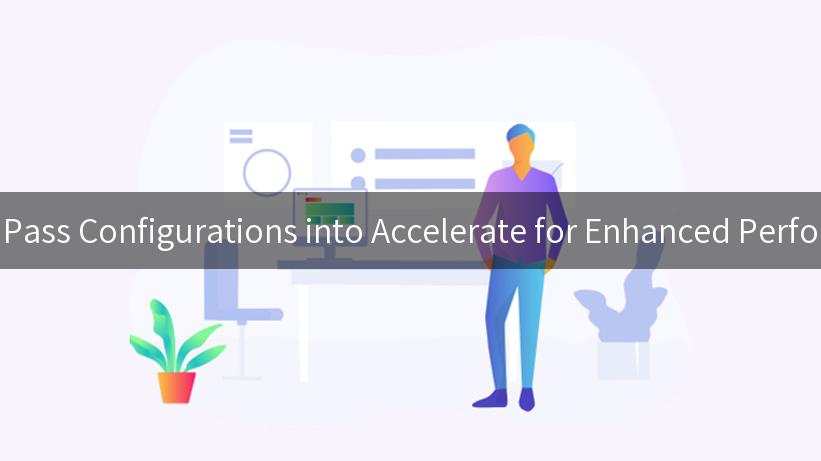
In today’s rapidly evolving digital landscape, achieving optimal performance with your AI solutions is crucial. One of the key ways to enhance performance is by effectively passing configurations into acceleration frameworks. This article explores the methods and strategies for passing configurations into acceleration frameworks like AI Gateway, Amazon services, and API Open Platforms, focusing on improving system efficiency through techniques such as Parameter Rewrite/Mapping.
Understanding the Importance of Acceleration
Acceleration frameworks are essential for optimizing AI and machine learning workflows. These frameworks help in reducing latency, improving throughput, and managing resource usage efficiently. For instance, when dealing with large datasets or complex algorithms, acceleration is critical to ensure timely and accurate processing.
The Role of AI Gateway
An AI Gateway acts as a bridge between different AI services and applications, facilitating seamless communication and data exchange. It provides a centralized platform to manage AI models, APIs, and configurations, ensuring that the AI ecosystem functions harmoniously. By optimizing the configurations passed into the AI Gateway, you can significantly enhance your system’s performance.
Configuring Amazon Services for Better Performance
Amazon Web Services (AWS) offers a wide array of tools and services that can be configured to accelerate AI workloads. By fine-tuning these configurations, businesses can achieve significant improvements in performance and cost-efficiency.
Key Configuration Parameters in AWS
-
Instance Types: Choosing the right instance type based on your workload requirements can lead to performance gains. AWS provides various instance types optimized for compute, memory, and storage.
-
Auto Scaling: Implementing auto-scaling ensures that your resources scale automatically in response to demand, optimizing both performance and cost.
-
Elastic Load Balancing: This service distributes incoming application traffic across multiple targets, such as EC2 instances, in multiple Availability Zones, which increases the fault tolerance of your applications.
Example: Configuring an EC2 Instance
Below is a simple example of configuring an EC2 instance using the AWS CLI:
aws ec2 run-instances \
--image-id ami-0abcdef1234567890 \
--count 1 \
--instance-type t2.micro \
--key-name MyKeyPair \
--security-groups my-sg
In this example, we are launching a single EC2 instance of type t2.micro with a specified key pair and security group.
API Open Platform and Parameter Rewrite/Mapping
API Open Platforms allow seamless integration of different services and applications by providing open access to their functionalities. One of the advanced techniques to optimize API performance is Parameter Rewrite/Mapping.
What is Parameter Rewrite/Mapping?
Parameter Rewrite/Mapping involves altering the parameters of an API request to better match the configuration of the target service. This can include renaming parameters, changing data formats, or even altering the values passed in the request.
Benefits of Parameter Rewrite/Mapping:
- Improved Compatibility: Ensures that the API requests are compatible with the target service configurations.
- Enhanced Performance: By optimizing the parameters, the requests can be processed more efficiently, leading to faster response times.
- Reduced Errors: Minimizes errors caused by mismatched parameters, improving the reliability of the API interactions.
Implementing Parameter Rewrite/Mapping
The following table illustrates a simple example of how parameter rewrite/mapping can be employed in an API Open Platform:
| Original Parameter |
Mapped Parameter |
Example Value |
user_id |
uid |
12345 |
start_date |
from_date |
2023-11-01 |
end_date |
to_date |
2023-11-30 |
By mapping user_id to uid, start_date to from_date, and end_date to to_date, the API requests become compatible with the target service’s expectations, thereby enhancing performance.
APIPark is a high-performance AI gateway that allows you to securely access the most comprehensive LLM APIs globally on the APIPark platform, including OpenAI, Anthropic, Mistral, Llama2, Google Gemini, and more.Try APIPark now! 👇👇👇
Passing Configurations into Accelerate
To truly harness the power of acceleration, it is vital to pass the right configurations into the acceleration framework. This involves understanding the specific requirements of your acceleration framework and tailoring your configurations to meet these needs.
Key Considerations for Passing Configurations
-
Identify Performance Bottlenecks: Before modifying configurations, identify the areas where performance is lagging. This could be response time, data throughput, or computational efficiency.
-
Customize Configurations: Based on the identified bottlenecks, customize your configurations. This could involve changing parameter values, modifying data structures, or adjusting resource allocations.
-
Test and Validate: After making configuration changes, it is crucial to test and validate the performance improvements. This can be done through benchmarking and performance testing tools.
Code Example: Passing Configurations into a Framework
Here’s a Python code example that demonstrates how to pass configurations into an acceleration framework:
def configure_acceleration(parameters):
# Example configuration parameters
config = {
'max_threads': parameters.get('max_threads', 4),
'cache_size': parameters.get('cache_size', 1024),
'enable_logging': parameters.get('enable_logging', True)
}
# Pass configurations to the acceleration framework
framework = AccelerationFramework(config)
return framework
# Example usage
parameters = {
'max_threads': 8,
'cache_size': 2048,
'enable_logging': False
}
framework = configure_acceleration(parameters)
In this code snippet, a dictionary of configuration parameters is passed to the AccelerationFramework, demonstrating how custom configurations can be applied.
Conclusion
Optimizing performance through effective configuration management in acceleration frameworks is a multi-faceted process that involves understanding the underlying architecture, identifying performance bottlenecks, and tailoring configurations to meet specific needs. By leveraging techniques such as Parameter Rewrite/Mapping and configuring services like Amazon’s AWS, businesses can achieve significant performance enhancements.
In doing so, organizations not only improve the efficiency and responsiveness of their AI solutions but also gain a competitive edge in the fast-paced digital world. Embracing these strategies will undoubtedly pave the way for more robust, scalable, and efficient AI applications.